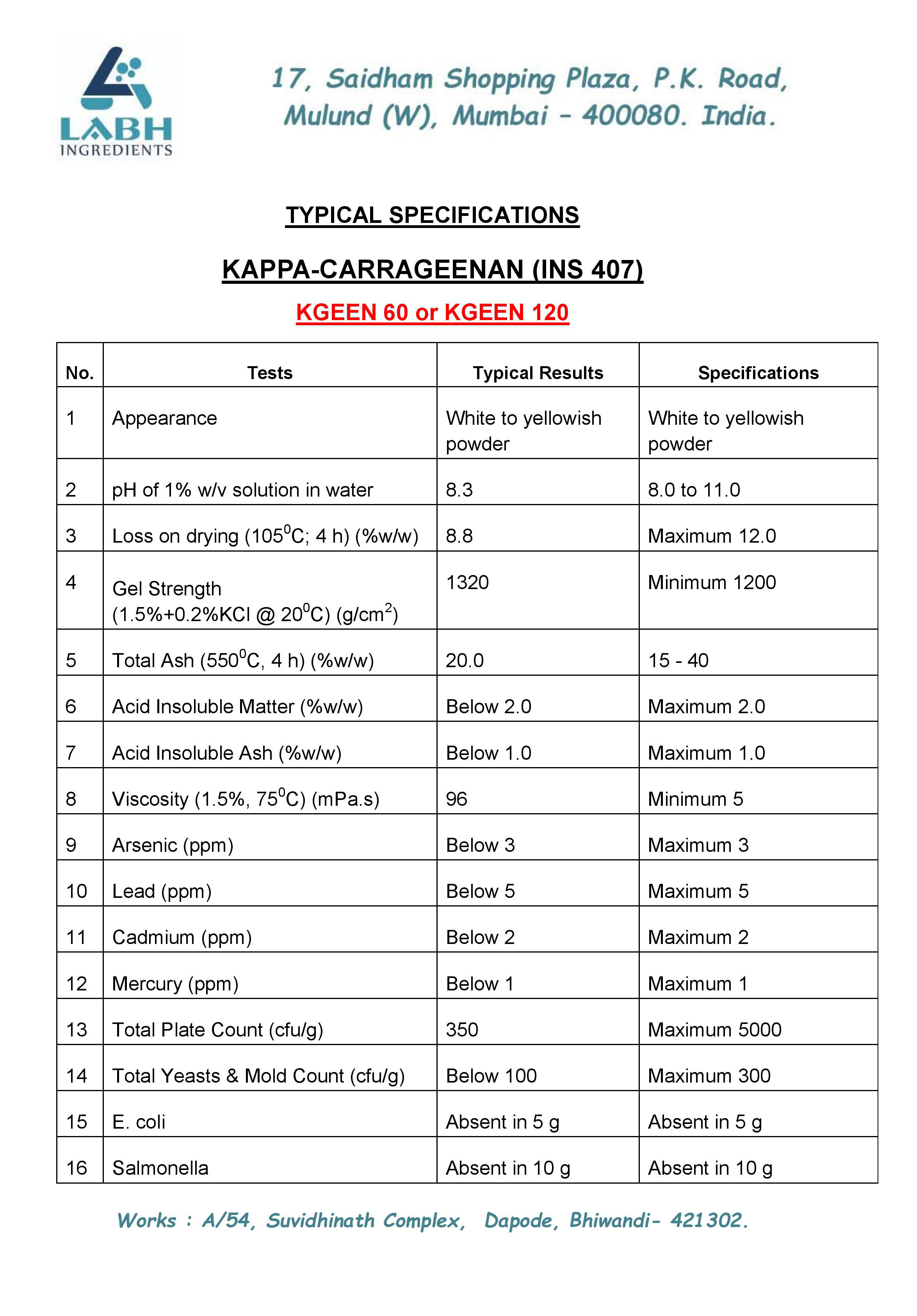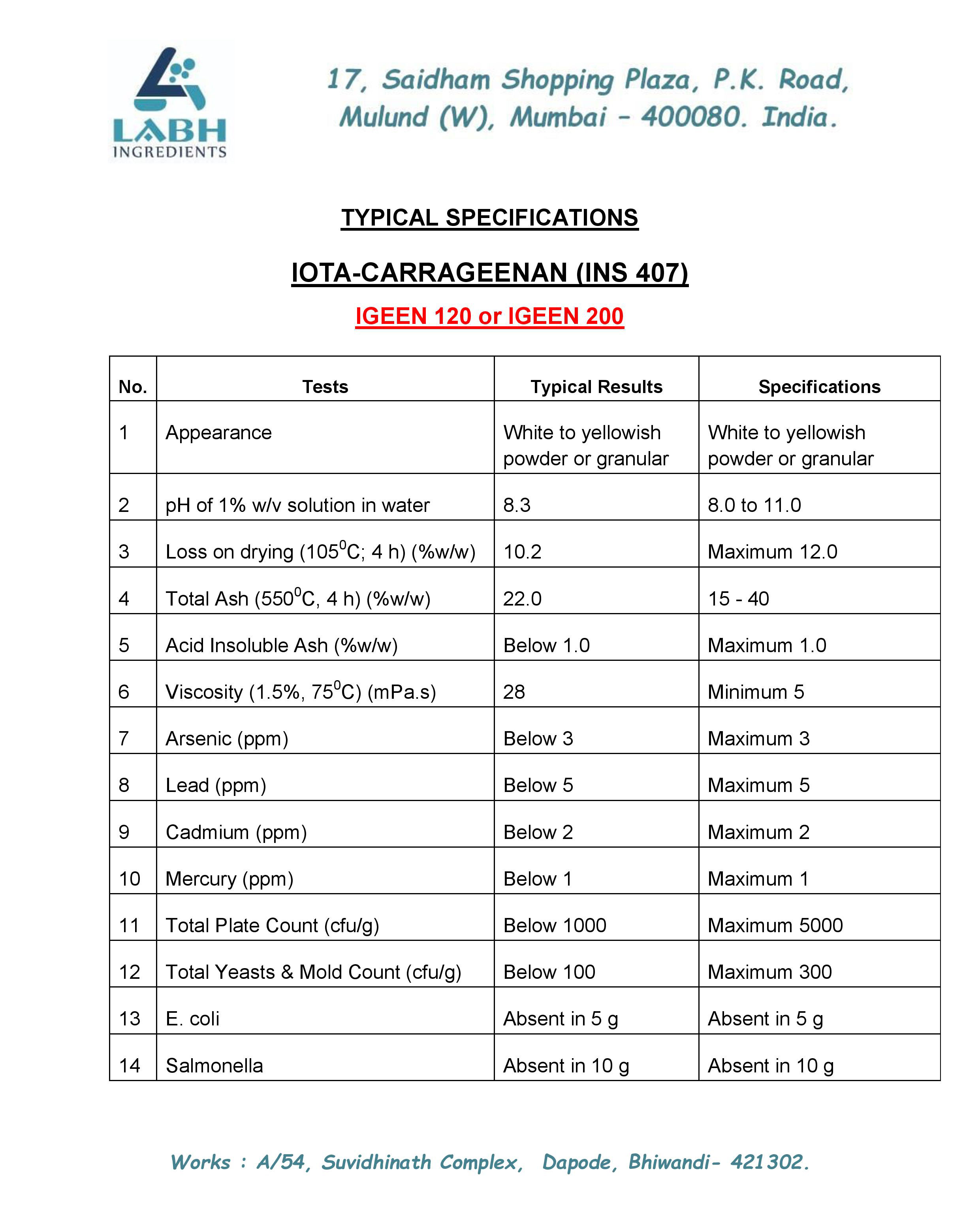Gum Carrageenan is a high molecular weight linear polysaccharide comprising repeating galactose units & 3,6-anhydrogalactos, both sulphated and non-sulphated, joined by alternating -(1,3) & -(1,4) glycosidic links and is an extraction product of red seaweeds, Rhodophyceae. These red seaweeds contain this naturally occurring polysaccharide which fill the voids within the cellulose structure of the plant. The principal species of Rhodophyceae used in the commercial extraction & production of carrageenan include Eucheuma cottonii and E. spinosum, now reclassified as Kappaphycus alverezii (`Cottonii') and Eucheuma denticulatum (`Spinosum').
There are 3 types of carrageenan; kappa, iota & lambda & can be defined by different types of thickening, gelling & texture they offer to make a gel: Kappa forms firm to brittle gels with potassium ions; Iota forms soft & elastic thermally reversible gels with calcium ions Lambda imparts viscous thickening property.
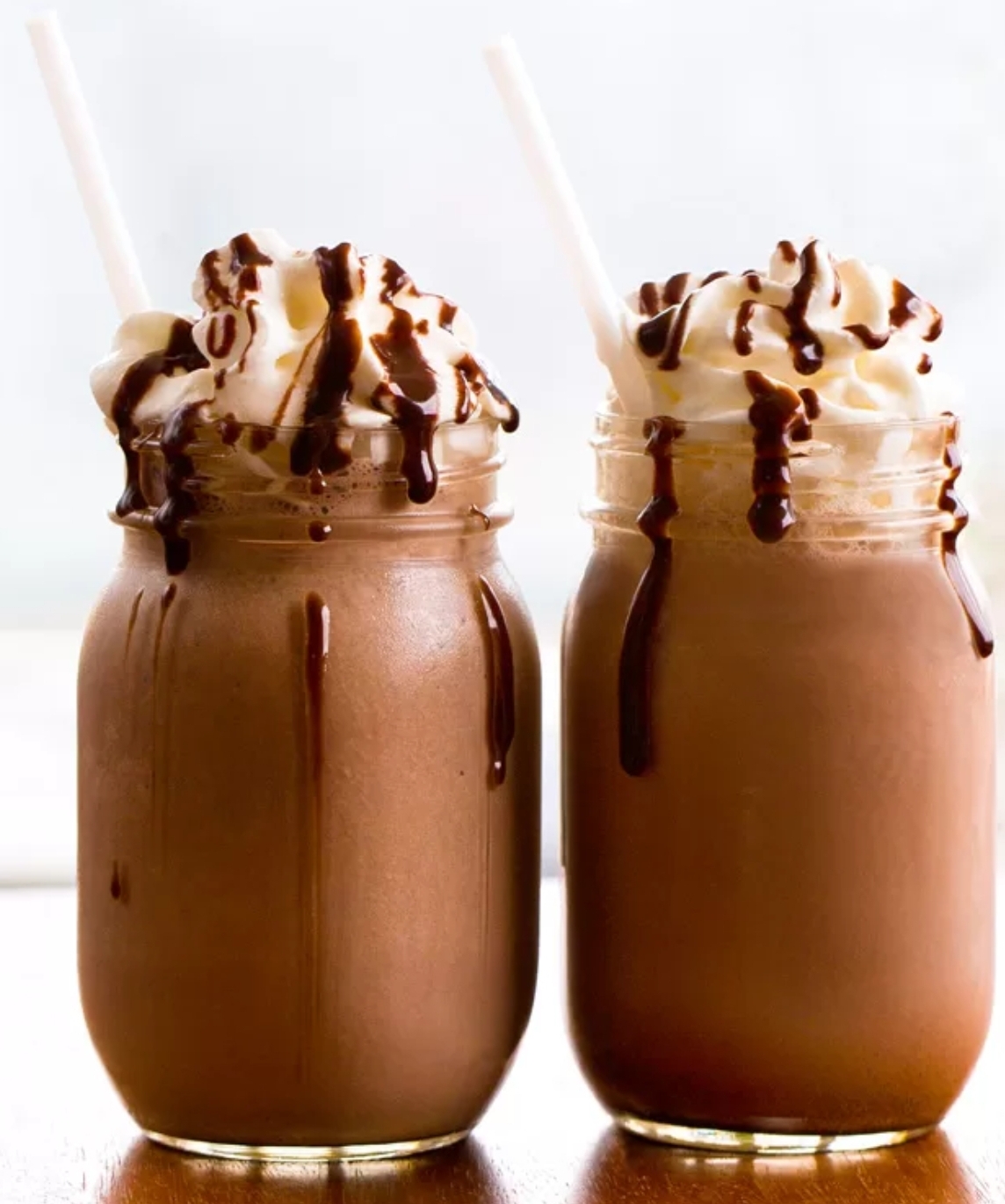
Gum Carrageenan - Shakes
Due to their helical conformation during the cooling of the kappa carrageenan solutions, the chains interact synergistically with locust bean or konjac gum & thus modify the gel structure. Infact the interaction of K-carrageenan & kappa-casein is used to stabilize many dairy products.
All carrageenans are soluble in hot water but only the sodium salts of kappa & iota are soluble in cold water. Salt content of foods has no effect on lambda carrageenan; it develops viscosity in cold water & milk but on heating & then cooling much higher viscosities are obtained. Lambda carrageenan gives viscous solutions which show pseudoplasticity or shear-thinning when pumped or stirred. These solutions are used for thickening, particularly in dairy products, to give a full body with a non-gummy, creamy texture. The influence of temperature is an important factor in deciding the type or combination of carrageenans that need to be used in a food system. All carrageenans hydrate at high temperatures and kappa & iota carrageenans in particular exhibit a low fluid viscosity. On cooling, these carrageenans set between 40°C and 70°C to form a range of gel textures depending on the type and level of cations present.
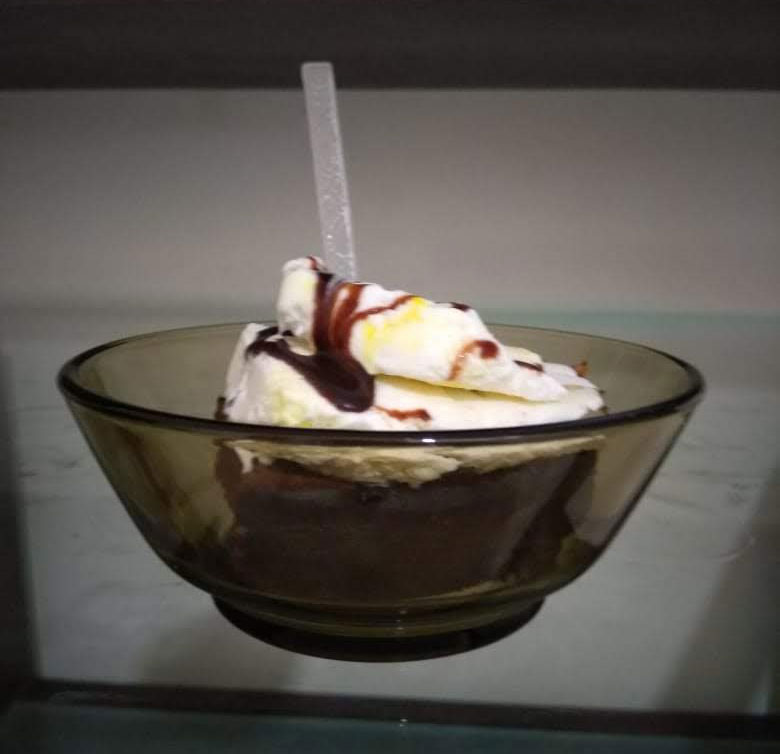
Gum Carrageenan - Ice Cream
Solutions of carrageenan lose viscosity & gel strength when heated in systems with pH values below about 4.3. This is because of autohydrolysis which occurs at low pH values as carrageenan in the acid form cleaves at the 3,6- anhydrogalactose linkage in the molecule. The rate of autohydrolysis increases at elevated temperatures & at low cation levels. However, once the solution is cooled below the gelling temperature, potassium ions associate with the sulphate groups on the carrageenan and this prevents autohydrolysis to proceed. To minimise the effects of autohydrolysis, it is recommended that, where possible, carrageenan should be processed under neutral conditions and acid should be added to the food immediately before depositing and filling. In acidic foods carrageenan should be added near the end of the process to avoid excessive polymer breakdown.
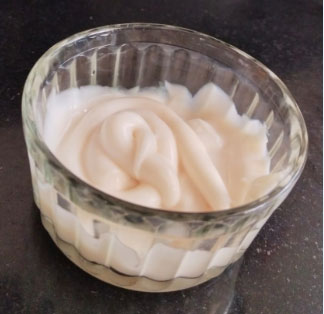
Gum Carrageenan - Whipped cream
In fact confirmation that no degradation occurs when the carrageenan is in the gelled state is demonstrated by the stability of acidic water dessert gels stored for periods of several months at ambient temperatures.
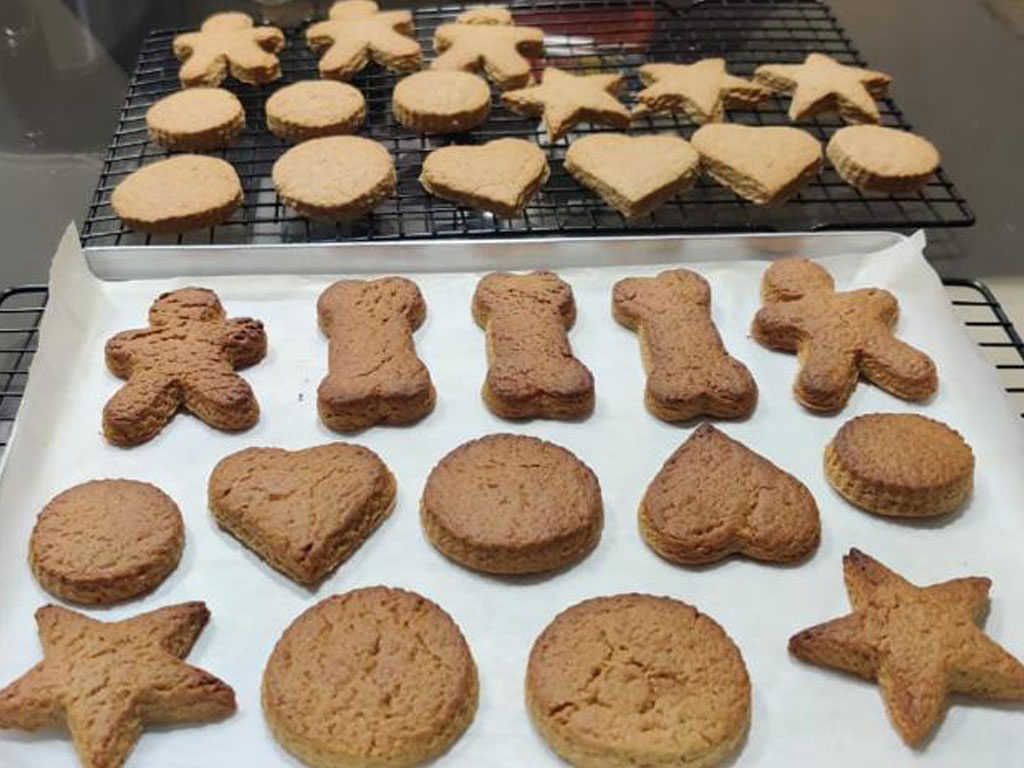
Gum Carrageenan - Baking Products

Gum Carrageenan - Baking Products
The broad spectrum of thickening and gelling properties of carrageenan results in its use in a wide range of water and milk-based food products.
| Application | Function | Carrageenan type | Use level (%) |
|---|---|---|---|
| Dessert gels | Gelation | kappa + iota or with locust bean gum | 0.5 to1.0 |
| Low calorie gels | Gelation | kappa + iota | 0.5 to1.0 |
| Non-dairy puddings | Emulsion stabilisation | kappa | 0.1 to 0.3 |
| Syrups | Suspension, bodying | kappa, lambda | 0.3 to 0.5 |
| BBQ and pizza sauces | Bodying | kappa | 0.2 to 0.5 |
| Whipped toppings | Emulsion stabilisation | kappa | 0.1 to 0.3 |
| Imitation coffee creams | Emulsion stabilisation | lambda | 0.1 to 0.2 |
| Petfoods | Thickening, suspending | iota + guar gum | 0.5 to 1.0 |
| Gelation | Fat stabilisation | kappa + locust bean gum | 0.5 to 1.0 |
| Application | Function | Carrageenan type | Use level (%) |
|---|---|---|---|
| Milk gels | |||
| Cooked flans | Gelation | kappa + iota | 0.2 to 0.3 |
| Cold-prepared custards | Thickening, gelation | kappa, iota, lambda | 0.2 to 0.3 |
| Puddings and pie fillings | Reduced starch, improved flavour, less fouling/burn-on |
kappa | 0.1 to 0.2 |
| Ready-to-eat desserts | Syneresis control, bodying | kappa + iota | 0.1 to 0.2 |
| Whipped products | |||
| Whipped cream | Stabilise overrun | lambda | 0.05 to 0.15 |
| Aerosol cream | Stabilise emulsion & overrun | kappa | 0.02 to 0.05 |
| Cold-prepared milks | |||
| Shakes | Suspension, mouthfeel, stabilise overrun | lambda | 0.1 to 0.2 |
| Acidified dairy desserts | |||
| Yogurt | Fruit suspension, mouthfeel | kappa | 0.2 to 0.5 |
| Frozen desserts | |||
| Ice cream, ice milk | Whey prevention, control meltdown | Kappa (+ Locust bean gum) | 0.01 to 0.02 |
| Pasteurised milks | |||
| Chocolate milks | Suspension, mouthfeel | kappa, lambda | 0.015 to 0.03 |
| Soya milks | Suspension, mouthfeel | iota, kappa | 0.03 to 0.1 |
| Sterilised milks | |||
| Chocolate milks | Suspension, mouthfeel | kappa | 0.015 to 0.025 |
| Evaporated milks | Whey prevention, mouthfeel | 0.005 to 0.015 | |
| Processed cheese | |||
| Cheese slices and blocks | Improve grating, slice integrity, control melting | kappa | 0.3 to 2.0 |
| Cream cheese and spreads | Gelation, moisture binding | Kappa + locust bean gum | 0.3 to 0.5 |
